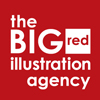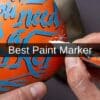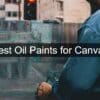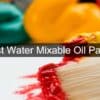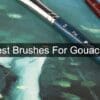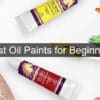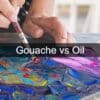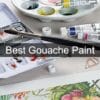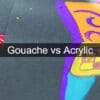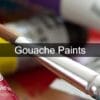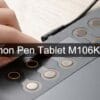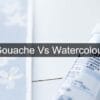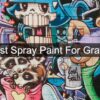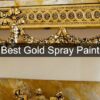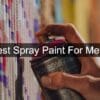How to Use Gouache Paint on Canvas
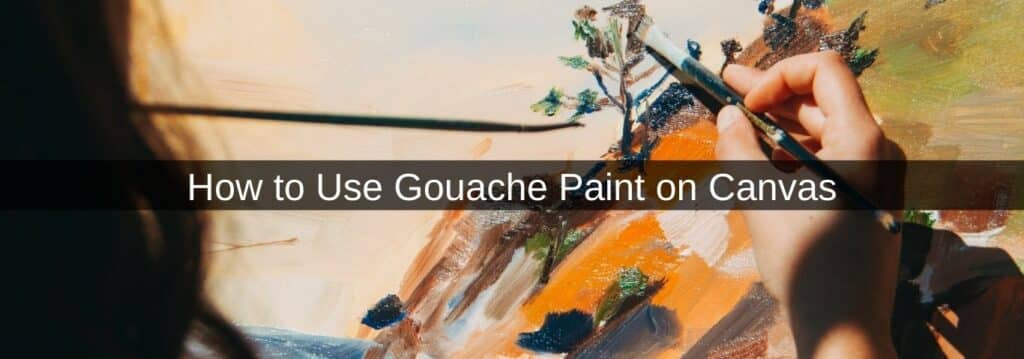
Gouache is a type of paint that gets less attention competed to opaque watercolor, oil-based, and acrylic paints. However, there are many people who prefer this kind of paint due to how it can create vibrant pieces of art and be used in versatile ways.
If you’re interested in learning more about using gouache paint, especially when it comes to canvas artwork, you’re in the right place.
Gouache Paints
Gouache paint is most similar to watercolor paint due to how it’s mixed with water. You can alter the intensity of colors depending on how much water you mix with them. However, gouache paint is mixed with gum arabic and water.
Gouache paint is thicker than opaque paint and dries matte, which can give you an artistic advantage. Many artists love this attribute due to how it results in fast drying times. You’re able to layer colors more quickly, which can help to keep you in the groove and not waste time waiting for layers to dry before adding more.
It also means that the paint doesn’t have a reflective quality to it, meaning that gouache paintings don’t change when light is reflected on them.
Applying Gouache Paint On Canvas
Gouache paint works best with watercolour brushes and on watercolour paper. Acrylic paint brushes are too stiff to properly wet gouache paints.
The brittle texture of gouache paint means that it’s more likely to crack canvases due to how flexible they are. Therefore, most people prefer using watercolor paper when using gouache paint. However, you can still use this paint on canvas, as long as you have a delicate touch.
It may be best to place a wooden board behind your canvas to ensure that it remains strong.
What You Need for Gouache Painting
Best Gouache Paint – You can find different types of gouache paint; however, it’s best to stick with a few primary colours if you’re just starting out.
Mixing palette – Gouache paint is available in a mixing tray or tube. It’s ideal to put the paint onto a mixing palette so that you can have the freedom to combine various colors more easily.
Brushes – Watercolor brushes are best. You can choose between natural or synthetic pigments for watercolour brushes. The wetter you keep the brush tip, the easier it will be to paint with gouache.
Water – Gouache paint pigment is incredibly strong, and therefore, you can alter its intensity with more or less water. Be sure to keep a pot of water by your side during your painting session. This ensures that you can always keep your brush wet and create texture and thin layers. A dry brush can be used at a later stage when you’ve finished adding the more transparent layers.
Gouache Painting Techniques
Base – Many artists like to stain their surface, which involves using a first layer of paint over the entire canvas. It’s best to make sure that this layer is light and therefore, you should use a good amount of water when you begin painting with gouache on canvas. Keep a paper towel nearby in case you add a little too much water-based gouache and need to dry it up.
Paint Layers – After you’ve added your base colors to the page and the gouache dries completely, you can start layering different colors with a fine brush. You can create lighter or darker layering effects depending on the amount of water that you use with the paint.
Dry brushing – Once you’ve created your base and added layers and details, you can start creating texture on the canvas. This is achieved by adding gouache paint that’s slightly wet on top of a dried section of your painting. The texture will be different depending on how much pressure you apply and how wet or dry the brush is.
Also read: How to Paint Watercolor on Canvas
Conclusion
Now that you have a better idea about the various gouache techniques, we hope that you’re feeling more confident about giving it a shot yourself. Be sure to implement the tips and techniques mentioned throughout this post to get the best results.
Affiliate Disclosure
In compliance with the FTC guidelines, please assume the following about all links, posts, photos and other material on this website: Any/all of the links on this website are affiliate links of which The Big Red Illustration Agency receives a small commission from sales of certain items, but the price is the same for you. www.bigredillustrationagency.com is a participant in the Amazon Services LLC Associates Program, an affiliate advertising program designed to provide a means for sites to earn advertising fees by advertising and linking to Amazon.com & Amazon.co.uk. Pages on this site may include links to Amazon and its affiliate sites on which the owner of this website will make a referral commission.
FULL TERMS HERE Cookie preferences: cookie preferences
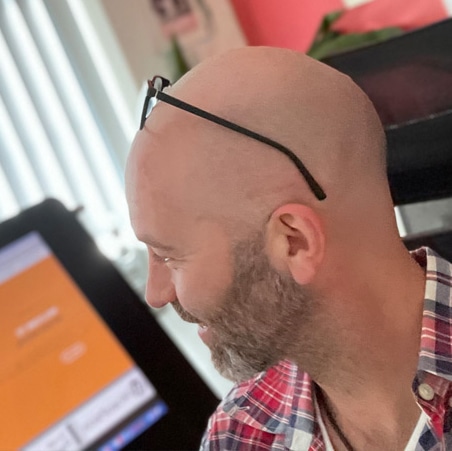
Written By Adam Rushton
Adam has made a name for himself in the illustration industry and is a passionate blogger and writer on the subject of art, illustration and graphic design.
His artwork has been featured in countless publications and used for very well-known media projects. As a professional illustrator for over 20 years, Adams media outlets, a wealth of knowledge, and experience enable him to consult and advise artists and illustrators in this country (from York and Manchester to Southampton and London) and all over the world.
